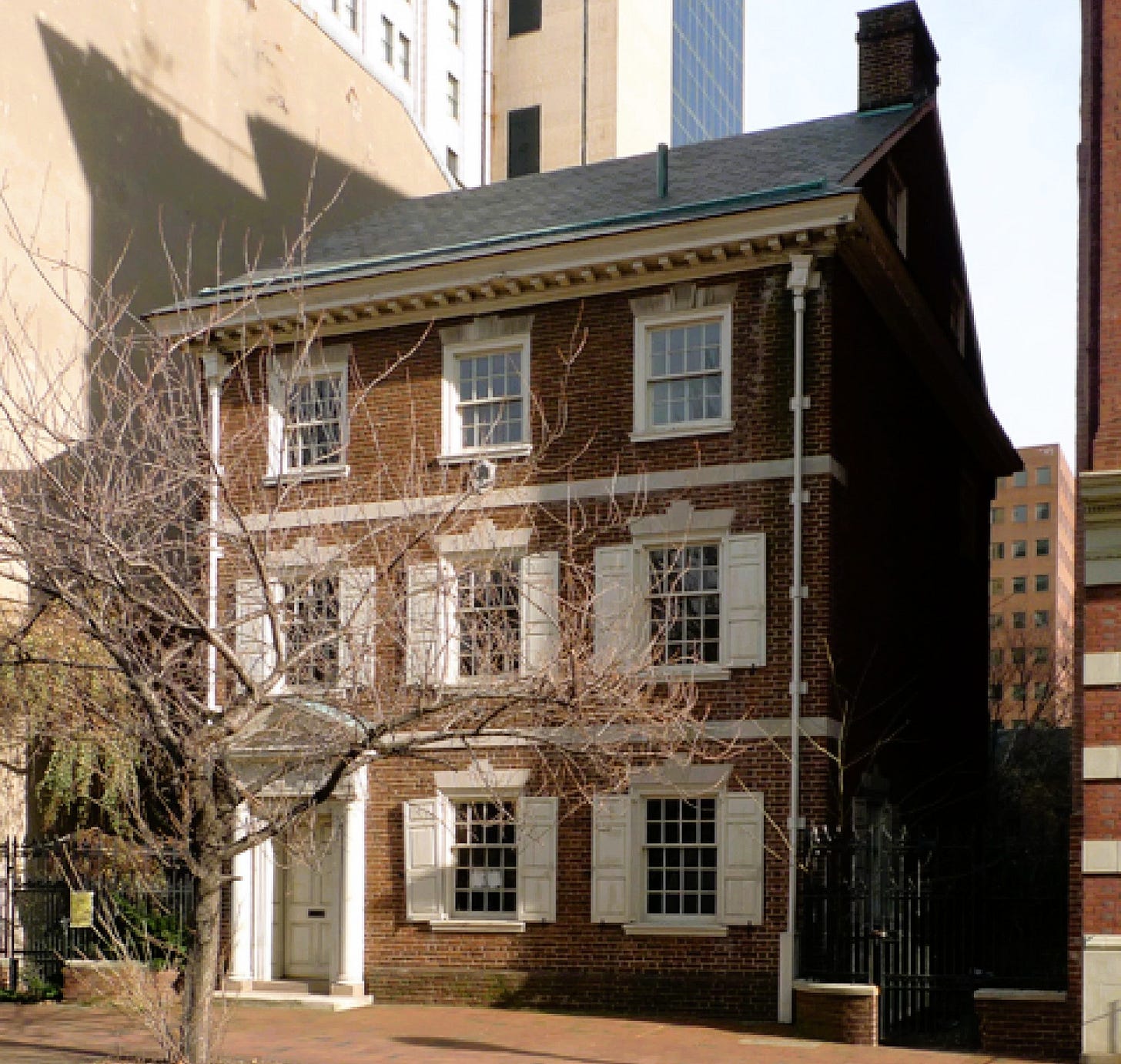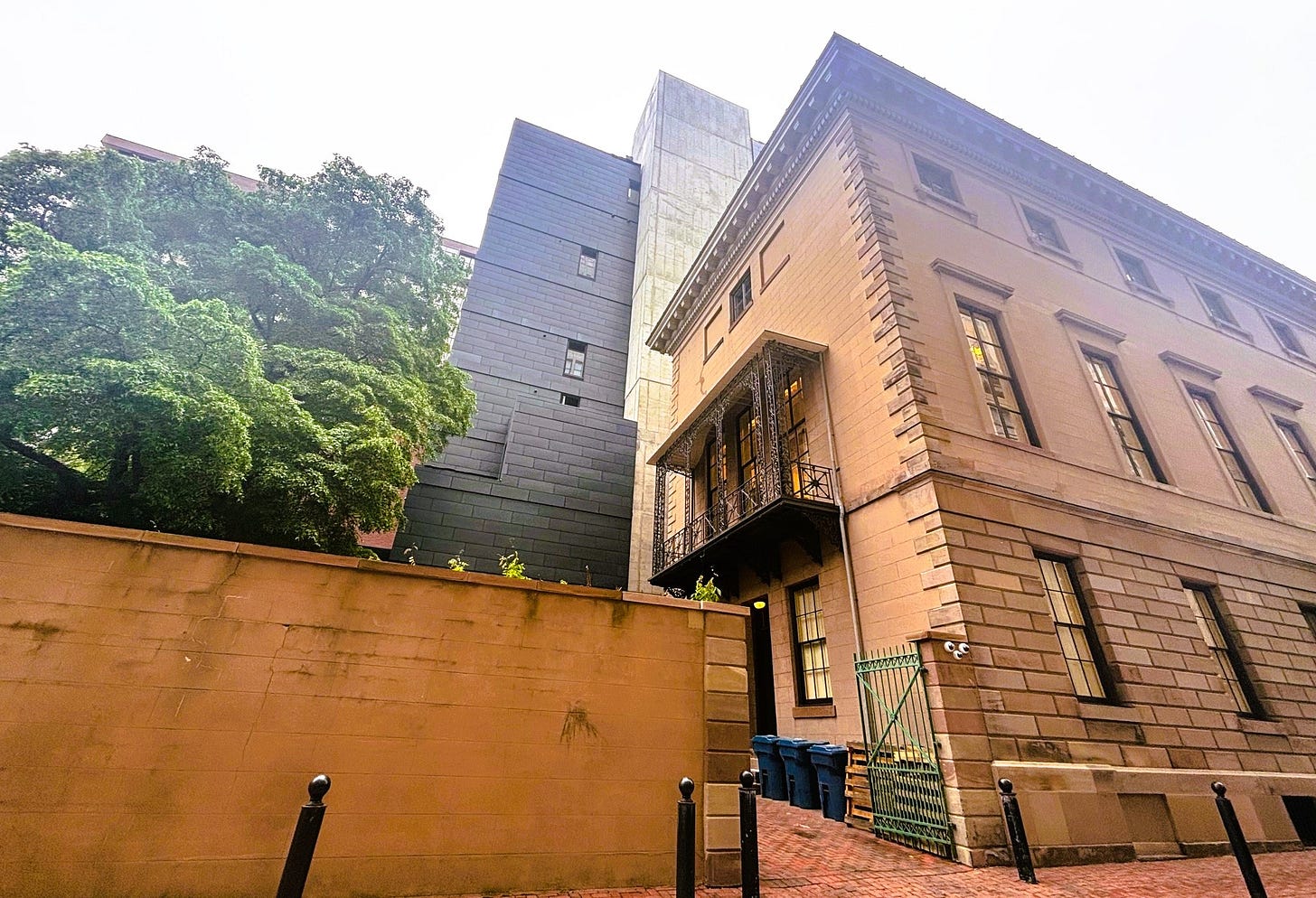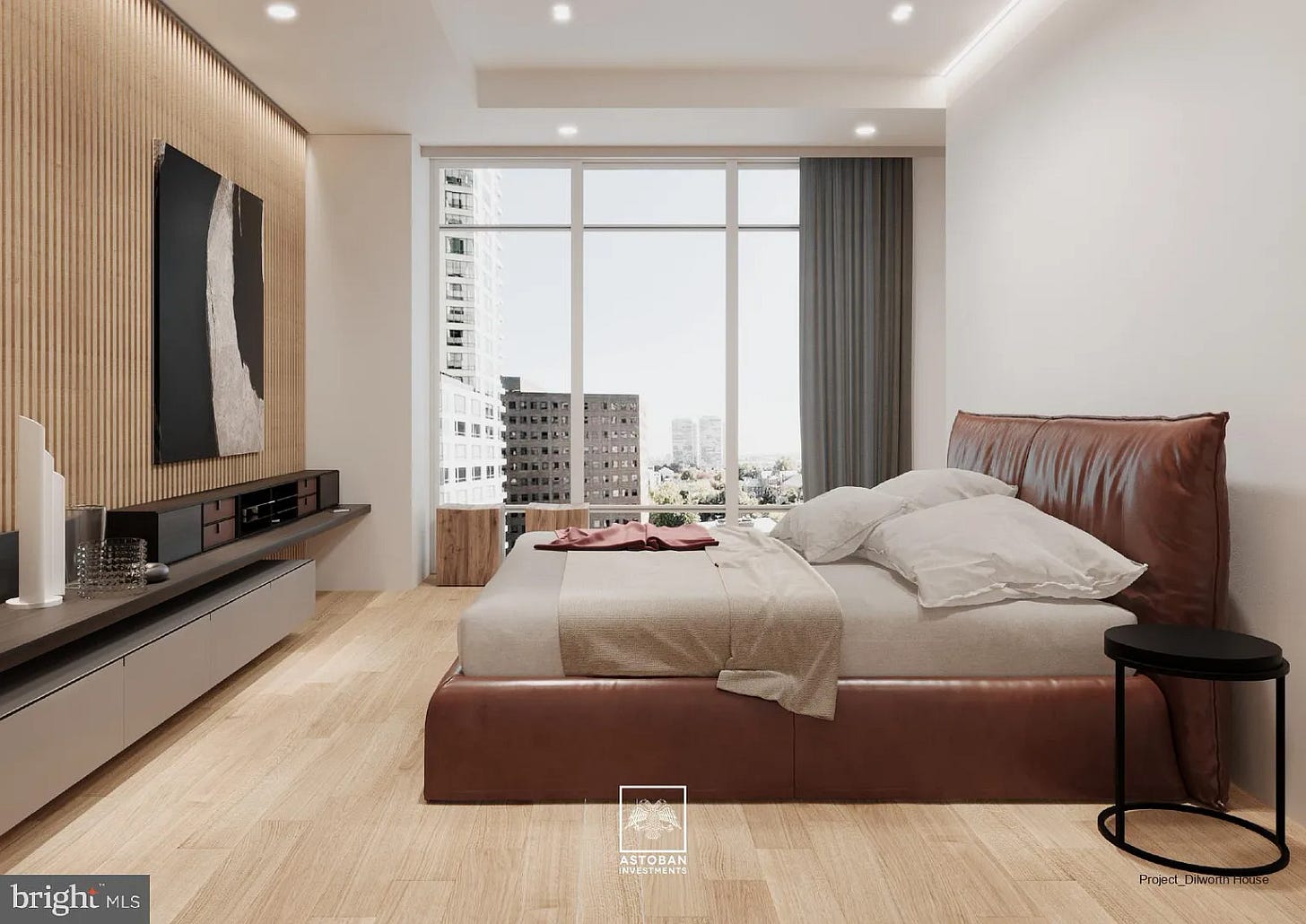The Dilworth Nears Completion on Washington Square
The eight-unit condo building is at the finish line, with a $14.5-million penthouse now on the market
Society Hill in Philadelphia was not always the leafy, sleepy enclave for the well-heeled that it is today. After years of disinvestment in the first half of the 20th century, the neighborhood was in a rather derelict state, with urban renewal setting its sights on this historical area. One piece of this puzzle was a new home for Mayor Richardson Dilworth, who built this Colonial Revival home at 223 S. 6th St. on Washington Square back in 1957.

But, as the neighborhood changed, this little slice of land became much more valuable. After a previous owner attempted to build a 17-story condo tower behind this historically protected landmark, Astoban Investments came in several years back to purchase the property for $7.5 million. After slight changes in concept over time, an eight-unit condo tower designed by CBP Architects was proposed and has now been under construction for the last few years.
With most of the facade finishes in place, we decided to take a walk around the property and get a closer look at what is now simply called The Dilworth. We knew that the design approach here was most definitely contemporary, with a dark color scheme and an angled roof line. What we weren’t necessarily expecting was that fact that the entire building on every side is completely covered in paneling. Front, back, sides, at ground level, at the roof line - everything is covered in a shingle-like dark gray panel, with large windows in the front and back. Balconies line the upper floors on the park-side of the building, creating a modern juxtaposition when compared to the historical buildings on either side.

If you thought that the pervasiveness of paneling might predict lower prices, you’d be mistaken! Several of the units here hit the market earlier this week, with prices ranging from $4.14 million for a four-bed/five-bath spot on the lower levels, up to a $14.5 million penthouse unit featuring five-beds/six-baths across three floors (with its own private elevator).
While the outside might not feel the most luxe, the interiors definitely feel refined. Greeted by a shared lobby area, the units themselves are dripping with high design, with light wood floors contrasted by dark feature walls and complimented by other natural materials. The spaces themselves are also expansive, with even the smallest unit clocking in at nearly 3,300 sqft. Additionally, an “advanced robotic parking solution” will allow residents to access their car directly without “anyone ever touching their vehicle.”

While the renderings of the interiors are certainly very nice, we are struggling to imagine the buyer who would want to drop $14 million+ on a panel-covered affair. Since when did brick-stacked metal panels exude “unrivaled elegance,” per the marketing materials? Did the Historical Commission give the thumbs up to this panel-only approach? How did they approve this material palette for such an important parcel? Or was this material switched after the fact?
We would offer this criticism for basically any market rate project, but this approach seems especially misguided for a tower that is asking for $2,911.65/sqft for the penthouse (and over $1,000/sqft for even the least expensive unit). It wouldn’t have been challenging or a financial deal-breaker for two levels of brick to have found its way to the Randolph St. side garage at the minimum, to offer a nod of neighborliness to the existing houses. In fact, one doesn’t have to go far to see another luxury condo tower - and one designed by this same exact architect - that offers a different facade approach.
500 Walnut uses much more elegant glazing, even if panels are also used here. However, the paneling is barely noticeable, as the slender glass tower basically reflects its surroundings instead of sucking in the light. Philadelphia isn’t exactly New York or Miami when it comes to ultra-high-income condo buyers, so we are surprised that The Dilworth didn’t bring its A game (or even C+ game) when it comes to exterior materials given the limited pool of buyers in this market. With these units finally available this week, it will be fascinating to see how sales proceed here.

















